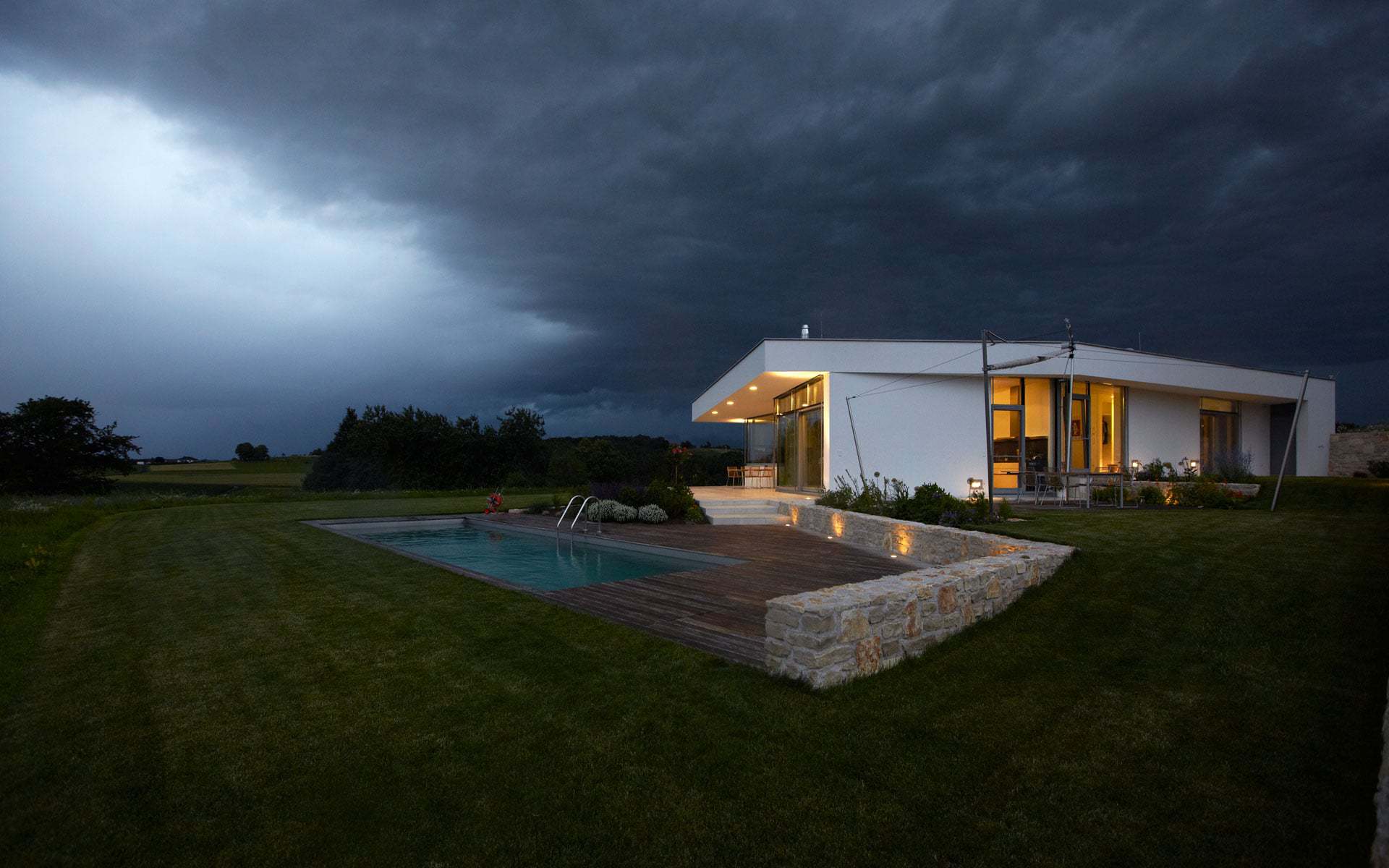This view opens on the short side of the elongated, parallelogram-shaped site that ends at this point in a dramatically accentuated way with the edge of a slope.
The building is developed from several lines of movement that traverse the space which the site offers in the form of three-dimensional diagonals, in the process generating a real field of forces. On the one hand an elongated, outreaching figure is created, which, on the other hand, is spatially condensed at the points where the diagonals intersect.
Miller House
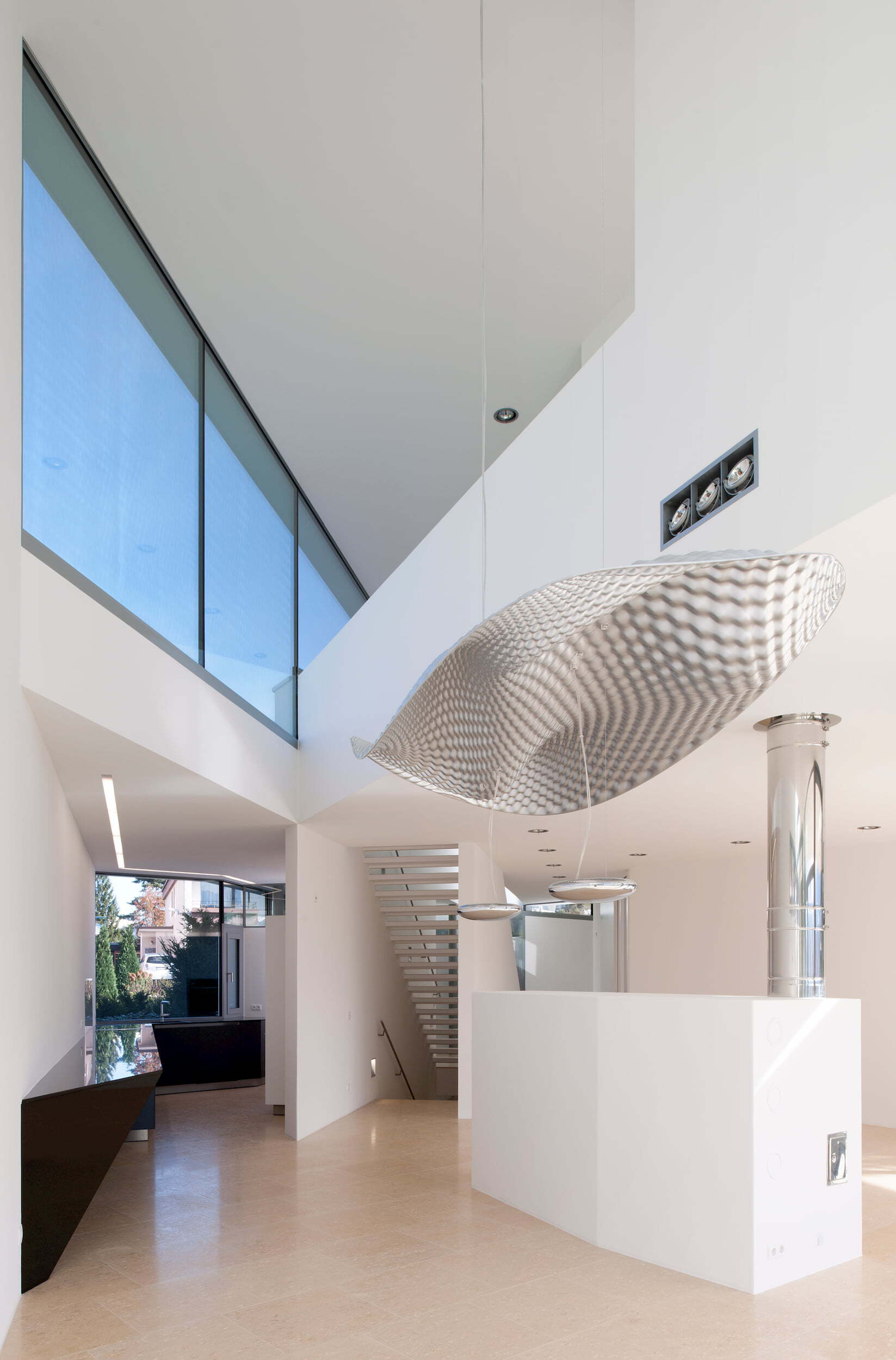
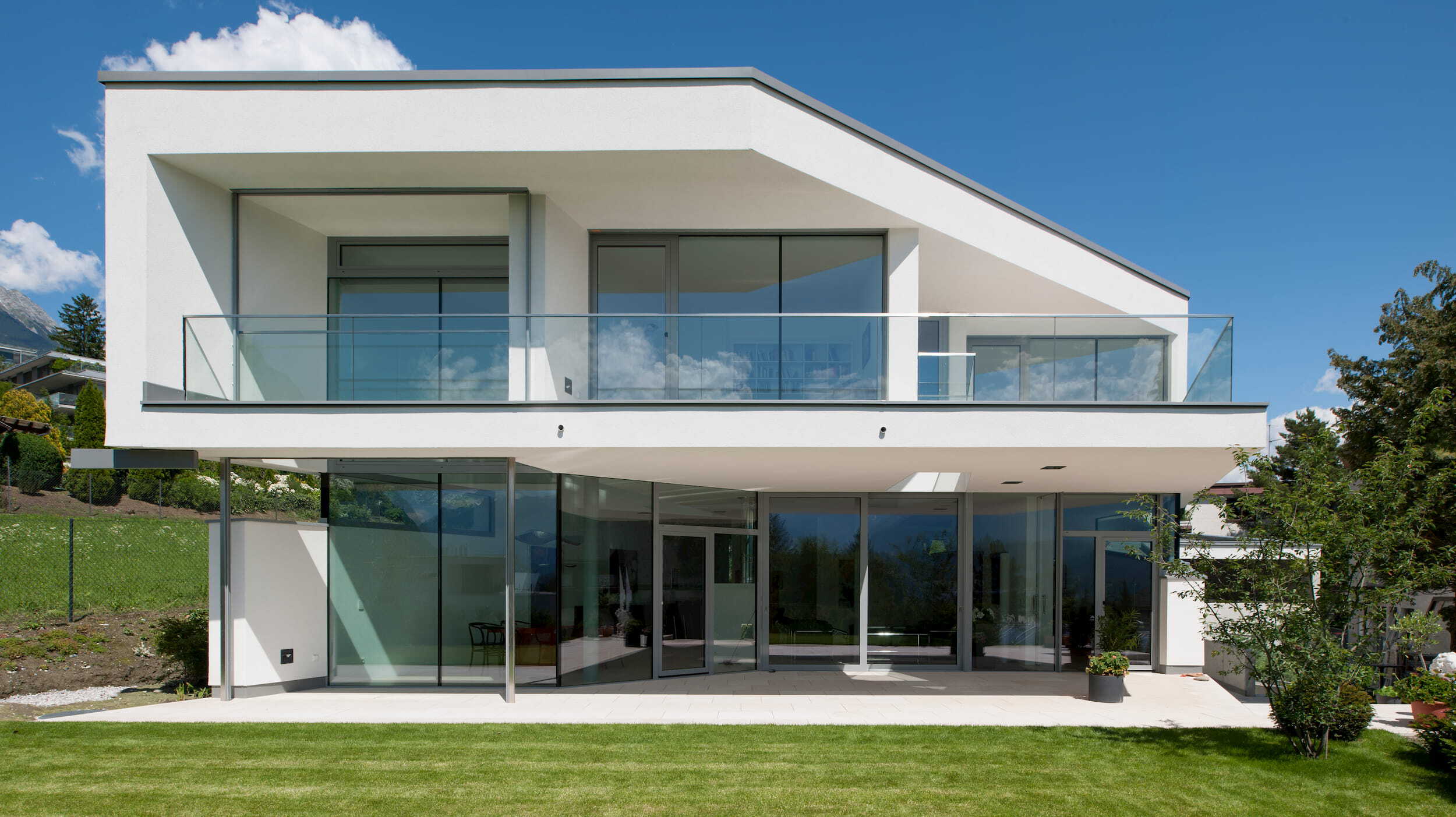
Year
2010
Venue
Innsbruck
State
Completed
Category
Private
Size
254 m²
Year |
Venue |
State |
Category |
Size |
|---|---|---|---|---|
2010 |
Innsbruck |
Completed |
Private |
254 m² |
Year
2010
Venue
Innsbruck
State
Completed
Category
Private
Size
254 m²
Miller House
The Miller House is in Hötting, a district of Innsbruck, on a step in the terrain in front of the Nordkette mountain range. The exceptional location of the site offers a view to the west that is prototypical for Innsbruck and that cannot be blocked by new building: this view extends into the upper Inn Valley, framed on the right by the dramatic rock edge of the Martinswand.
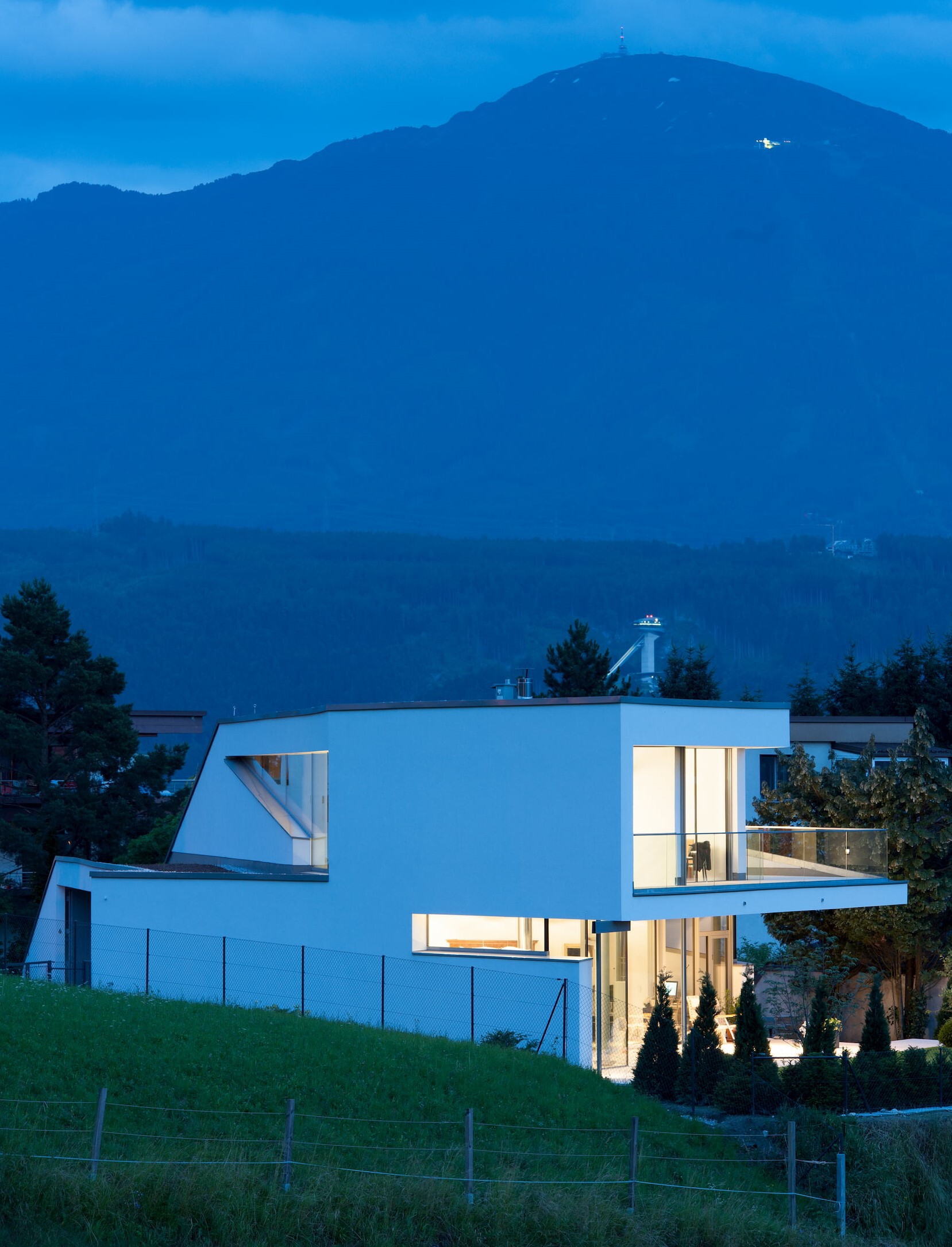

We are talking here about the following lines of movement: coming from the north, entering the site at its north-east corner and extending south-west in order to capture the view referred to but also to receive sunlight; from the south-east corner of the site, rising from the level of the terrain, above and past the driveway and extending along the single-flight staircase to the first floor towards the north-west to the equally imposing view of the massif of the Nordkette range; from this spatial diagonal others branch off, which, on the first floor too, fan out from south-west to west, striving towards the view and the sun.
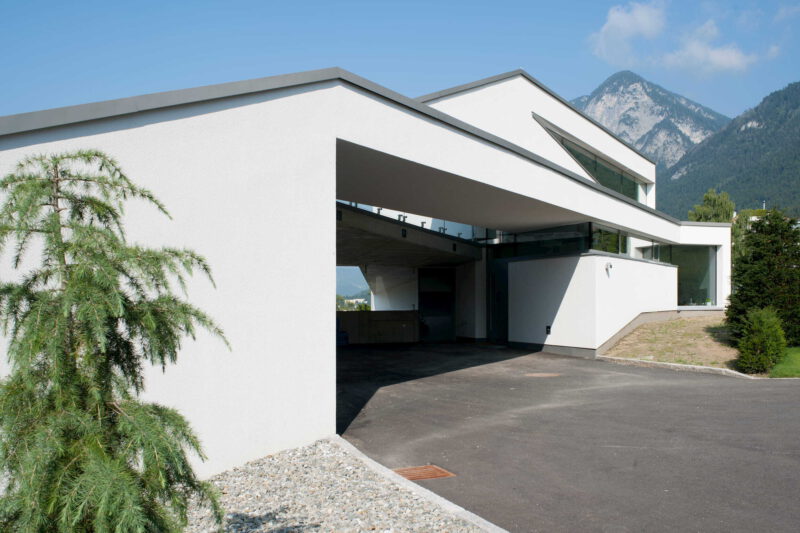
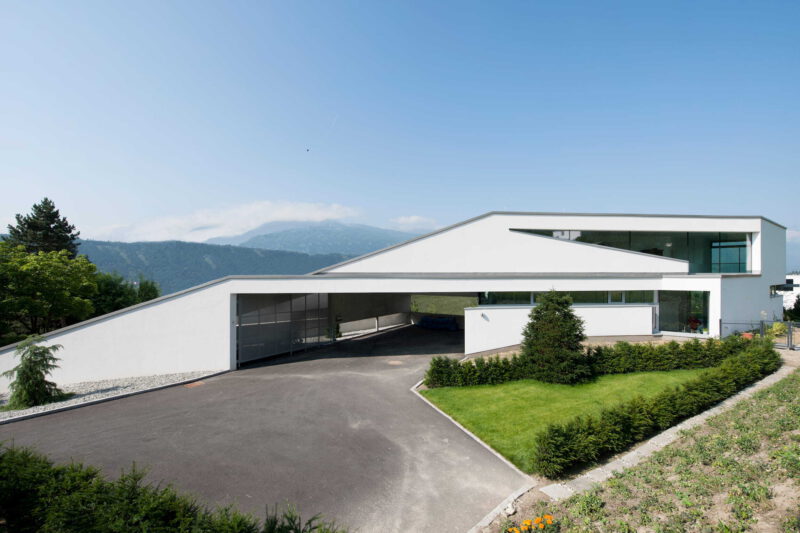
One could think here of a thermodynamic process, of flows that are initially laminar, later turbulent, less dense (the spatial zones) and highly dense (the building envelope and storeys): walls, floors and ceilings are understood first as a continuum which is then differentiated by this process in order, on the one hand, to acquire the three characteristics just mentioned and, on the other, to generate those openings described in standard terminology as glazing, windows and ceiling openings into voids.
A rich variety of spaces and spatial zones is developed out of the field of tension generated by these lines: from spaces that are narrow, tall and two-storey to broad, horizontal, single-storey spaces and to linearly arranged ones.
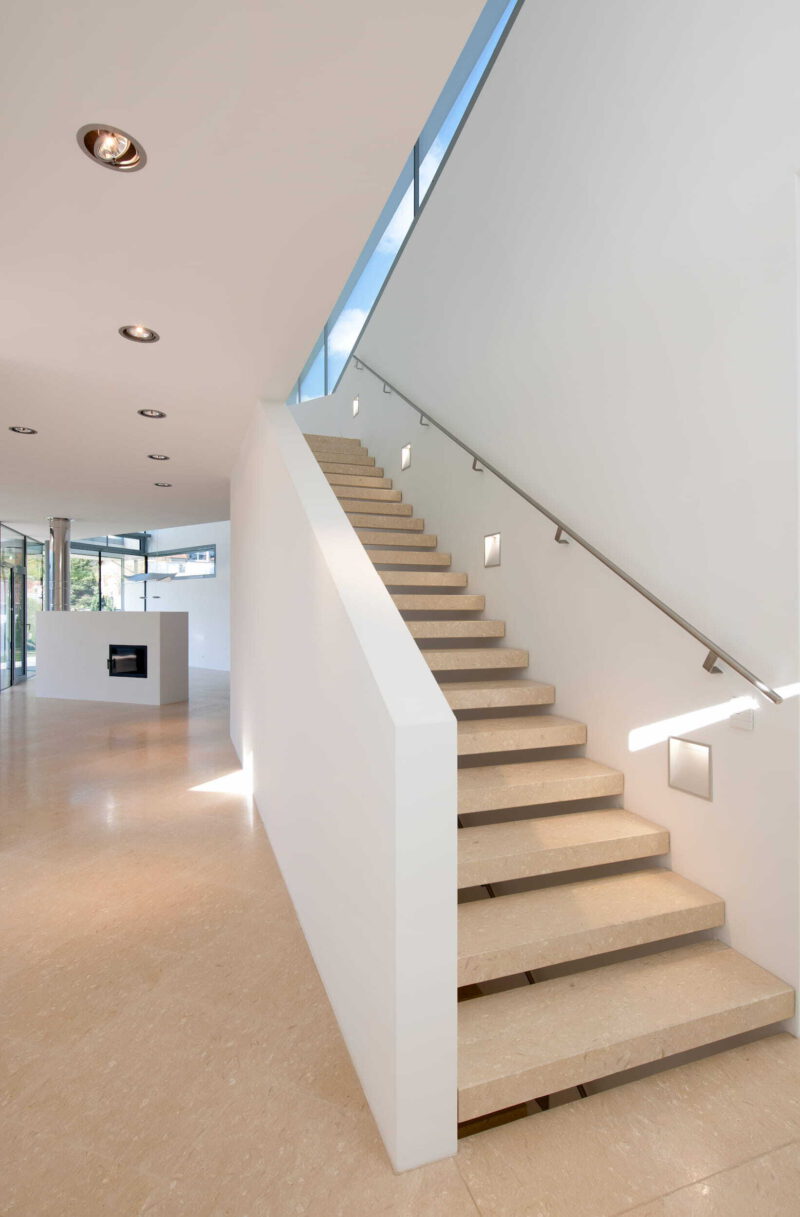
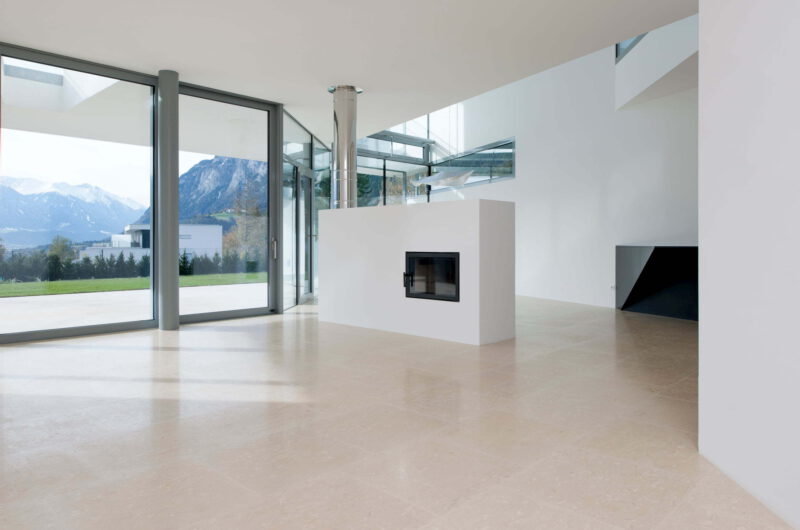
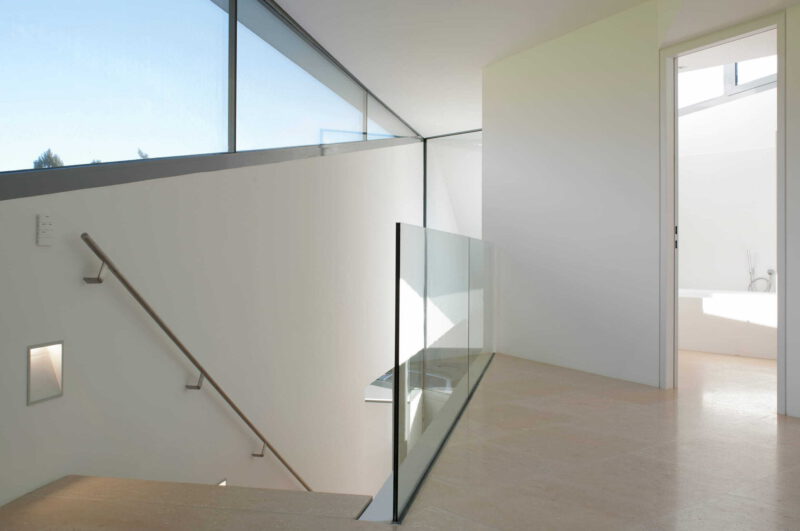
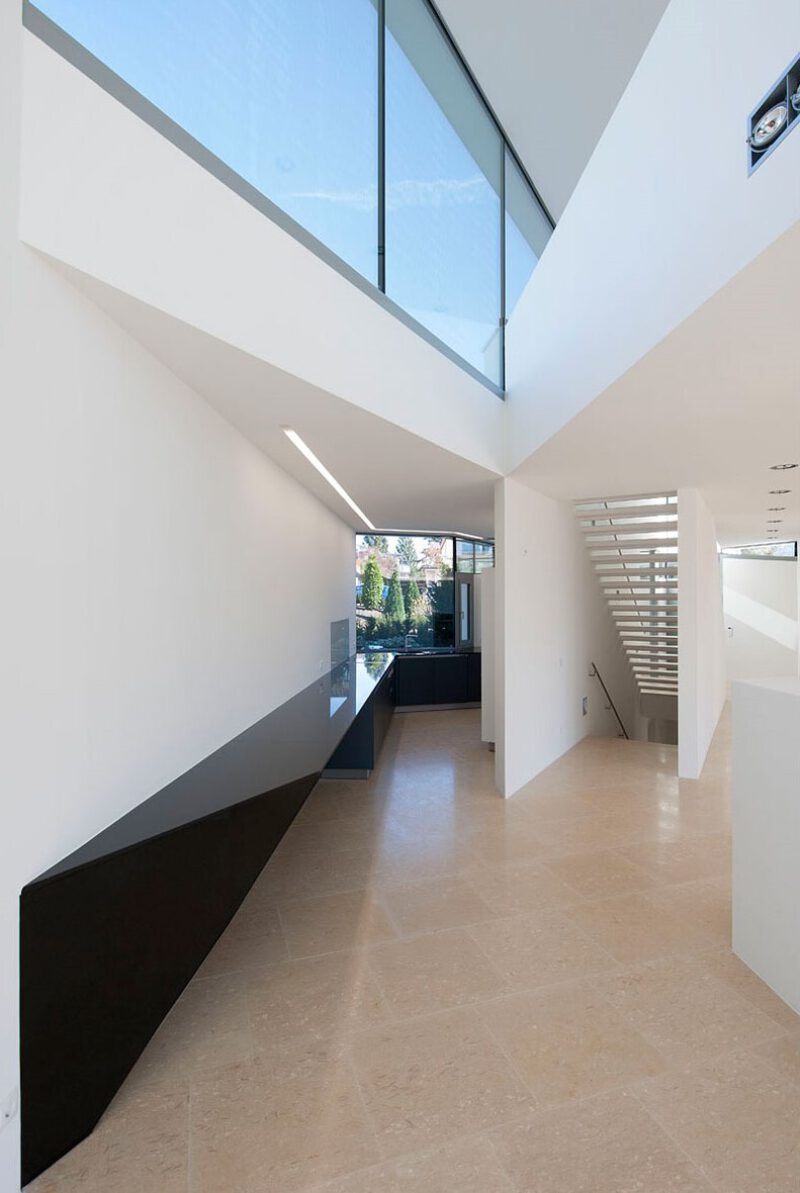
That, in the process, a powerful building volume is created, like a big-cat with its muscles tensed just before it leaps, and enormous demands are made on the structural design, is, of course, self-evident.
And yet the building emanates calm and contemplation through the generosity and serenity of the lines and the reduction of the materials to just three: anthracite grey metal (aluminium and steel), white render, and sedimentary stone thousands of years old (giallo dorato).
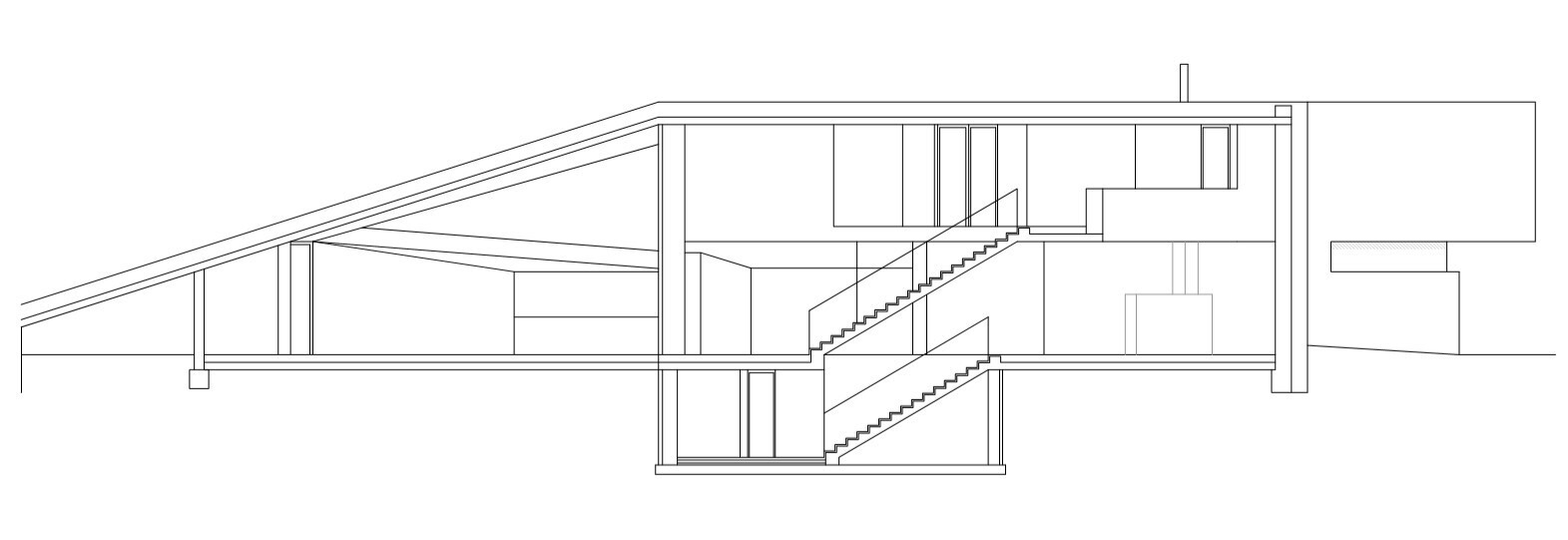
A further energy field on the site was activated to provide heat: thebuilding supplies itself with geothermal energy from two probes about120 metres deep.
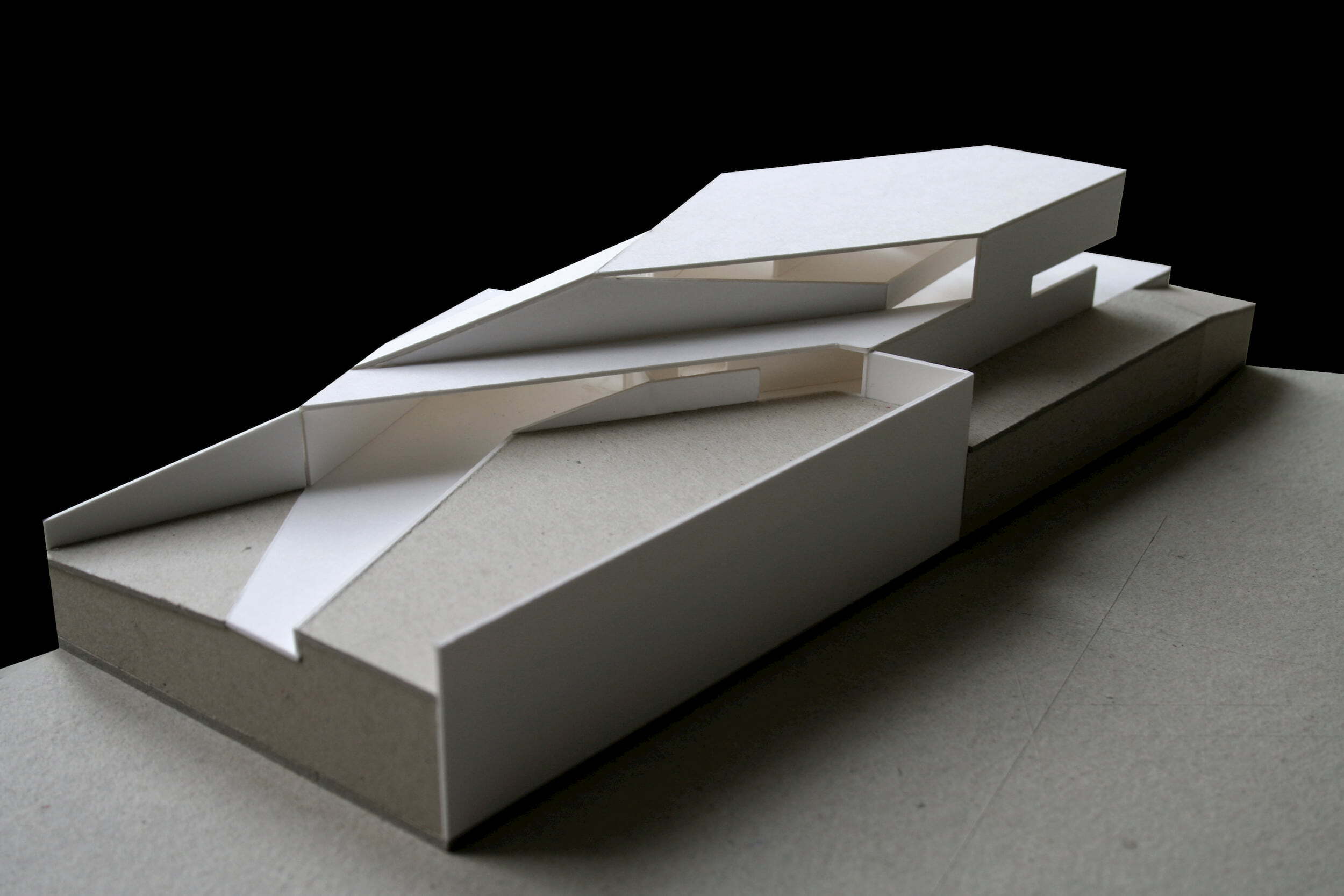
Architecture
Pichler & Traupmann Architects
Project team
Mario Gasser
Wolfgang Windt
Client
Dr.Christine Miller
Structural design
ZSZ Ingenieure ZT GmbH, Innsbruck
MEP engineering
Franz Bouvier Installationen GmbH & CoKG, Zams
Hard facts
Start of planning: 2010
Start of construction: 2011
Completion: 2012
Usable Floor area: 254m²
Function: Dwelling house
Scope: Architectural design
Model
Pichler & Traupmann Architects
Photographs
Henning Koepke, Munich
